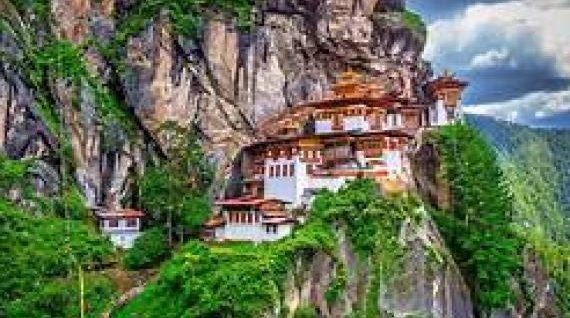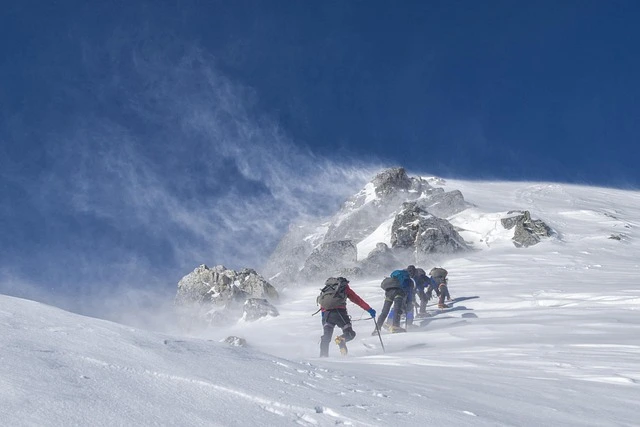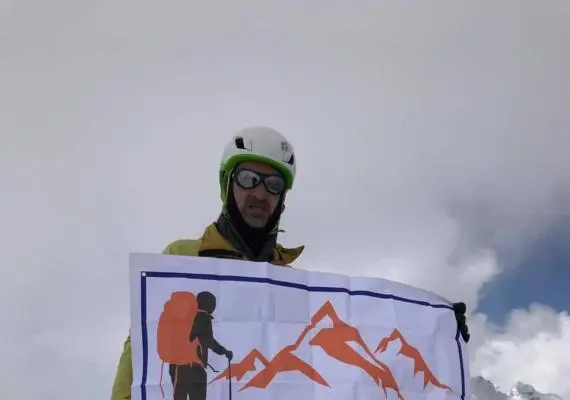Have you ever dreamed of witnessing the majestic Himalayas from two different kingdoms in a single journey? The Nepal to Bhutan tour offers precisely this extraordinary experience, combining the vibrant culture of Kathmandu with the serene beauty of the Land of the Thunder Dragon. This carefully crafted 6-night Bhutan tour from Nepal takes you on an unforgettable journey through pristine monasteries, dramatic mountain landscapes, and centuries-old traditions.
Starting from Kathmandu, this comprehensive 7-day package to Bhutan includes a scenic flight over the world's highest peaks, visits to iconic landmarks like Tiger's Nest Monastery, and an immersion in Bhutanese culture—all for an incredible US$2250. Whether you're drawn to spiritual experiences, architectural wonders, or simply the thrill of exploring one of the world's last remaining Buddhist kingdoms, this tour delivers exceptional value and memories to last a lifetime.
In this guide, we'll walk you through the complete itinerary, costs, visa requirements, and everything you need to know to embark on this remarkable Himalayan adventure.
Key Attractions & Cultural Experiences in Bhutan
Bhutan's attractions extend far beyond mere sightseeing, offering profound cultural immersion and spiritual experiences that distinguish this small-group Bhutan tour from other tours to Kathmandu.
Iconic Monasteries and Dzongs
The architectural marvels of Bhutan tell stories of artistic excellence and spiritual devotion. Rinpung Dzong in Paro showcases the distinctive Bhutanese style with its towering white walls, golden roofs, and intricate woodwork—all constructed without a single nail. The structure serves dual purposes as a monastic center and administrative headquarters, embodying Bhutan's unique integration of temporal and spiritual authority.
Punakha Dzong presents a different character entirely, its whitewashed walls seeming to float above the confluence of two rivers. The six-story central tower (utse) contains sacred relics and stunning murals depicting the life of Buddha. During spring, the surrounding jacaranda trees bloom purple, creating a photographer's paradise.
Living Culture and Traditions
Bhutanese culture remains remarkably preserved, partly due to the country's isolation and partly through deliberate policy. Daily encounters with tradition include:
- Archery competitions – Bhutan's national sport with singing and dancing
- Traditional dress code – Gho for men, kira for women, mandatory for officials
- Buddhist practices – Prayer wheels, butter lamps, and circumambulation
- Handicraft traditions – Weaving, painting, and wood carving demonstrations
Festivals and Spiritual Practices
If your Nepal to Bhutan tour coincides with a tsechu (religious festival), you'll witness Bhutan at its most colorful. These festivals feature masked dances performed by monks and laymen, depicting the triumph of good over evil. The Paro Tsechu in spring attracts thousands, with the display of a giant thangka (religious painting) considered especially auspicious.
Daily spiritual practices permeate Bhutanese life. Prayer wheels spin clockwise at every monastery, sending mantras skyward. Colorful prayer flags flutter on hillsides and bridges, their five colors representing the elements. Locals regularly circumambulate temples and chortens, accumulating merit through these mindful walks.
Natural Wonders
Beyond cultural attractions, Bhutan's pristine environment captivates visitors. The country's constitutional requirement to maintain 60% forest coverage ensures unspoiled landscapes. Natural highlights include:
- Over 770 bird species including the rare black-necked crane
- Blue poppies (national flower) blooming in alpine meadows
- Takins (national animal) in preservation sanctuaries
- Rhododendron forests with 46 species
- Rivers flowing from glacial sources
Tour Costs & What's Included (US $2250 cost – 2025 edition)
Understanding the Nepal Bhutan tour cost 2025 helps travelers appreciate the exceptional value this package offers. The all-inclusive price of US $2250 per person covers comprehensive services ensuring a hassle-free experience.
Accommodation Standards
The package includes 6 nights in government-approved 3-star hotels, strategically located to minimize travel time while maximizing cultural exposure. In Paro, hotels often feature traditional Bhutanese architecture with modern amenities. Thimphu accommodations place you near the city center, facilitating evening walks and shopping. Punakha's hotels typically offer river valley views and peaceful garden settings.
Room features include:
- Twin-sharing arrangements with attached bathrooms
- Hot water and heating systems
- Basic WiFi connectivity
- Traditional décor elements
- Single supplement available ($200-250 additional)
Meal Inclusions
Full board meal plans ensure you never worry about finding restaurants or managing food budgets. The culinary journey introduces you gradually to Bhutanese flavors while accommodating international tastes.
Daily meal arrangements:
- Breakfast: Buffet style mixing continental and local options
- Lunch: Multi-cuisine selections during sightseeing
- Dinner: Authentic Bhutanese specialties with adjustable spice levels
- Beverages: Tea/coffee included; alcohol extra
Transportation and Guide Services
Comfortable vehicles with experienced drivers navigate Bhutan's winding mountain roads safely. The package includes all ground transportation in air-conditioned coaches or SUVs, depending on group size. Professional guides licensed by the Tourism Council of Bhutan provide invaluable cultural interpretation and ensure smooth logistics throughout your journey.
Complete Package Inclusions
The $2250 package covers:
- Bhutan visa processing and fees
- Sustainable Development Fee ($600 value)
- All monument entrance tickets
- Government taxes and service charges
- Airport transfers in both cities
- Kathmandu-Paro flights ($400-500)
- Mineral water during tours
- Basic trekking equipment for Tiger's Nest
Not included:
- Travel insurance
- Personal expenses and shopping
- Alcoholic beverages
- Tips for guides and drivers
Bhutan Visa & Permit Details from Nepal
Navigating Bhutan visa from Nepal requirements becomes straightforward with proper guidance. Unlike many destinations, Bhutan's visa process integrates closely with tour bookings, reflecting the country's "high value, low impact" tourism policy.
Visa Application Process
The visa application begins once you've confirmed your tour booking. Your tour operator initiates the process by submitting your details to the Tourism Council of Bhutan. The online system typically processes applications within 72 hours, though peak season may extend this timeframe.
Required documents:
- Passport copy (minimum 6 months validity)
- Digital passport photograph
- Completed application form from operator
- Tour payment confirmation
Upon approval, you receive a visa clearance letter via email, which you must print and carry for check-in at Kathmandu airport.
Sustainable Development Fee Breakdown
The Bhutan Sustainable Development Fee forms a crucial component of the country's tourism policy. For 2025, international visitors pay $100 per person per night, totaling $600 for this 6-night itinerary.
This fee directly funds:
- Free education and healthcare for all Bhutanese citizens
- Environmental conservation projects protecting 70% forest coverage
- Cultural preservation initiatives maintaining traditions
- Infrastructure development in rural communities
- Carbon-neutral initiatives (Bhutan is carbon-negative)
Entry Procedures and Special Permits
Upon arrival at Paro Airport, present your visa clearance letter at immigration. Officers stamp the actual visa into your passport—a colorful addition to any travel document. The process typically takes 15-30 minutes, depending on flight arrivals.
Important notes:
- Indian nationals enjoy special privileges (INR 1,200/day, no visa required)
- Certain areas require additional permits beyond standard visa
- Drone usage needs prior permission (apply 1 month advance)
- Photography restrictions apply at religious and government sites
Best Time to Visit: Seasons & Festivals
Selecting the optimal time for your Nepal to Bhutan tour significantly impacts your experience. Each season offers distinct advantages, from crystal-clear mountain views to vibrant festivals.
Spring Season (March to May)
Spring ranks among the most popular periods for Bhutan travel, and for good reason. The rhododendrons bloom across hillsides in spectacular displays of pink, red, and white. Temperatures in Paro and Thimphu range from 10°C to 20°C—perfect for trekking to Tiger's Nest without excessive heat or cold.
Valley floors burst with wildflowers, while farmers prepare fields for summer crops. The clear skies provide excellent mountain views, particularly from Dochula Pass. This popularity means advance booking becomes essential, particularly for the limited flights from Kathmandu.
Autumn Season (September to November)
Autumn rivals spring for ideal travel conditions. The monsoon clears, leaving crisp air and spectacular visibility. The landscape turns golden with ripening rice fields, while apple orchards in Paro valley offer harvest-time bounty.
Autumn advantages:
- Reliable weather for photography
- Major festivals including Thimphu Tsechu
- Comfortable temperatures (15-20°C days)
- Clear mountain views
- Harvest season cultural activities
Summer and Winter Considerations
Summer (June-August) offers budget advantages with fewer tourists and lush green valleys. Afternoon rains are common but mornings often stay clear. Winter (December-February) provides crystal-clear mountain views and intimate cultural experiences, though temperatures can drop below freezing in Paro and Thimphu.
Festival Calendar Highlights
Timing your visit to coincide with festivals enhances cultural immersion:
- Paro Tsechu (March/April): Bhutan's most famous festival
- Thimphu Tsechu (September/October): Capital celebration with royal attendance
- Punakha Drubchen (February/March): Historical reenactments
- Black-Necked Crane Festival (November): Celebrates winter migration
Who This Tour is Ideal For
This thoughtfully designed Nepal to Bhutan tour caters to diverse traveler profiles while maintaining comfort and cultural authenticity.
Perfect Match For:
Cultural Enthusiasts and History Buffs
If ancient monasteries, living traditions, and Buddhist philosophy fascinate you, this tour provides unparalleled access to Himalayan Buddhist culture. The pace allows deep engagement with each site rather than rushed photo opportunities.
First-Time Himalayan Travelers
The moderate altitude and comfortable accommodations make this an ideal introduction to Himalayan travel. Unlike Nepal's high-altitude treks, Bhutan's cultural sites remain below 3,500 meters, minimizing altitude sickness risks.
Small Groups and Families
The small group Bhutan tour from Kathmandu format (typically 2-16 participants) ensures personalized attention. Families appreciate Bhutan's safety, cleanliness, and educational value for children. Multi-generational groups find suitable activities for all ages.
Photography Enthusiasts
Bhutan presents endless photographic opportunities, from portraits with traditionally dressed locals to architectural masterpieces against mountain backdrops. The tour timing considers optimal lighting at major sites.
Fitness Requirements
While not requiring athletic prowess, the tour involves considerable walking:
- Daily activities: 2-4 hours of walking
- Monastery visits include stairs and uneven surfaces
- Tiger's Nest trek is moderately challenging
- Alternative viewpoints available for less mobile travelers
- Vehicle access to most cultural sites
Not Ideal For:
This tour may not suit travelers seeking luxury resort experiences, adventure sports focus, extensive shopping, nightlife entertainment, or extreme trekking adventures. The cultural focus and structured itinerary work best for those interested in authentic experiences over leisure activities.
Travel Tips & Essentials
Proper preparation enhances your Nepal to Bhutan tour experience. These practical insights address common concerns and overlooked details.
Pre-Departure Preparations
Begin visa processing immediately upon booking confirmation. While the tour operator handles applications, delays in providing documents can jeopardize travel dates. Purchase comprehensive travel insurance covering medical evacuation—while Bhutan maintains excellent hygiene standards, mountain environments carry inherent risks.
Essential preparations:
- Scan all documents and store in cloud
- Start walking routine 1 month prior
- Consult doctor about altitude medications
- Pack medications in original containers
- Check passport validity (6+ months)
The Spectacular Paro Landing
Paro Airport's approach ranks among aviation's most challenging, with only specially certified pilots permitted to land. The flight path threads between mountains, requiring visual navigation and manual control. While initially alarming, remember Druk Air and Bhutan Airlines maintain impeccable safety records.
Insider tip: Book window seats on the left side when flying from Kathmandu for optimal mountain views.
Currency and Budget Planning
While the tour includes most expenses, budget for personal costs:
- Shopping for handicrafts: $100-200
- Alcoholic beverages: $3-5 per drink
- Tips for guide and driver: $50-75 total
- Snacks and extras: $25-50
Bhutan accepts US dollars and Indian rupees alongside Ngultrum. ATMs in Thimphu and Paro accept international cards but charge high fees. Exchange money at Paro Airport for better rates.
Cultural Etiquette and Connectivity
Respect for local customs ensures positive interactions. Remove shoes before entering temples, dress modestly with covered shoulders and knees, and always walk clockwise around religious monuments. Photography inside temples typically requires permission.
Connectivity notes:
- Local SIM cards available at airport
- WiFi in hotels (basic speeds)
- Embrace digital detox opportunities
- Download offline maps before arrival
Sustainable Travel Practices
Support Bhutan's environmental conservation by carrying reusable water bottles, avoiding single-use plastics, and respecting wildlife distances. Choose locally-made handicrafts over imported souvenirs to support artisan communities.
Quick Takeaways
- Unbeatable Value: Complete 6 nights 7 days Bhutan tour Nepal package for just US $2250 including accommodation, meals, transport, guide services, and all fees
- Convenient Departure: Direct flights from Kathmandu to Paro take only 1 hour 20 minutes with spectacular Himalayan views
- All-Inclusive Experience: Package covers Bhutan visa, Sustainable Development Fee ($600 value), entrance fees, and government taxes
- Cultural Immersion: Visit iconic sites including Tiger's Nest Monastery, Punakha Dzong, and Buddha Dordenma with expert local guides
- Ideal Timing: Best travel periods are March-May and September-November for clear mountain views and comfortable weather
- Small Group Format: Personalized attention with typical group sizes of 2-16 participants ensuring quality experiences
- Moderate Activity Level: Suitable for most fitness levels with gradual acclimatization and optional trek modifications
- Comprehensive Itinerary: Covers Paro, Thimphu, and Punakha valleys showcasing Bhutan's cultural and natural diversity
- Sustainable Tourism: Your visit directly supports Bhutan's free healthcare, education, and environmental conservation through the SDF
- Hassle-Free Process: Tour operator handles all visa applications and permits, simplifying the booking process
Conclusion
The Nepal to Bhutan tour represents more than a simple vacation—it's an investment in transformative experiences and sustainable tourism. This carefully crafted 6 nights, 7 days package from Kathmandu delivers exceptional value by combining spiritual encounters, cultural immersion, and Himalayan splendor for just US $2250.
From the thrilling landing at Paro Airport to the achievement of reaching Tiger's Nest Monastery, every moment contributes to lasting memories. The journey through three distinct valleys showcases Bhutan's commitment to preserving traditions while embracing mindful modernization. Your Sustainable Development Fee directly supports this unique nation's vision of Gross National Happiness, making you a partner in their sustainable development story.
The convenience of departing from Kathmandu, combined with comprehensive inclusions and expert guidance, removes typical travel stresses. Whether you're drawn by Buddhist philosophy, architectural wonders, or simply the promise of experiencing one of Earth's last Himalayan kingdoms, this tour delivers authentic encounters that exceed expectations.
Don't let this opportunity to explore the Land of the Thunder Dragon pass by. Limited flight seats and seasonal considerations make advance booking essential, particularly for spring and autumn departures.
Book your Nepal to Bhutan 6-night/7-day tour for only US $2250 with HimalayanHero.com, your trusted travel company based in Kathmandu, Nepal.
Start your Bhutan journey today — inquire now!
Take the first step toward your Himalayan adventure. Contact our experienced team to check availability, discuss customization options, or address any questions. Your extraordinary journey from Nepal to Bhutan awaits—where ancient traditions meet pristine landscapes, and every traveler becomes part of Bhutan's sustainable future.





